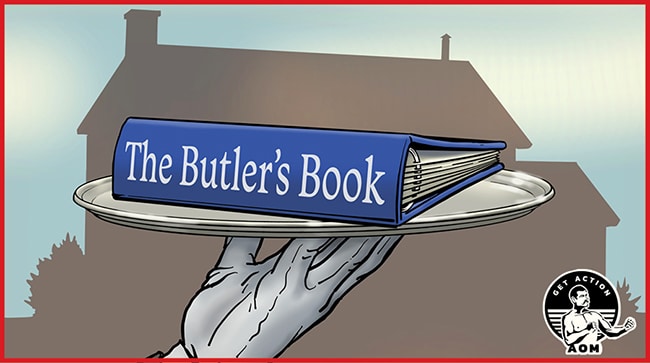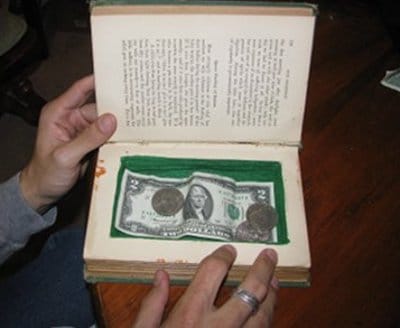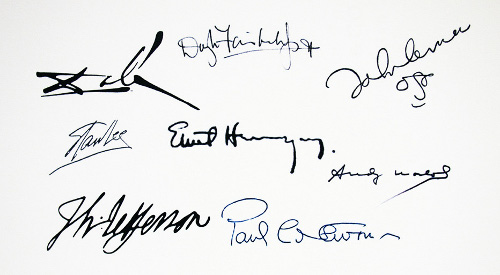
Because of the coincidental confluence of two books coming into my life at the same time — Home Comforts: The Art and Science of Keeping House by Cheryl Mendelson and Economics by Aristotle — I’ve been thinking a lot about household management this year.
Part of that reflection has been philosophical. I’ve contemplated the Greek idea of household management, what they called oikos, and how the way you take care of your home has a deeper importance than is normally thought and can set the foundation for eudaimonia or flourishing.
Part of that reflection has also been practical. In our 19 years of marriage, Kate and I have done a pretty decent job running our household. We largely keep our home clean, tidy, and well-maintained, our family organized, and our budget in balance. But there’s always room for improvement, and I’ve been looking for ways to become a better householder.
One such improvement presented itself when I interviewed Charles MacPherson, a former professional butler, for the podcast. MacPherson recommended creating a tool that’s part of every top-notch butler’s arsenal: the Butler’s Book.
The Butler’s Book: The Instruction Manual For Your Home
Back in Victorian times, the Butler’s Book was where the butler kept all the information about the household: staff and maintenance schedules, inventory of china and silverware, food preferences, measurements for clothing, etc.
Today, butlers or household managers of wealthy households have something similar to a Butler’s Book; they just call it “a household procedures manual.”
A modern-day butler uses a household procedures manual to keep track of all the contractors used to maintain the home, information about the utilities, inventories of possessions and supplies, and maintenance schedules of major appliances. Many of these books will also have emergency preparedness protocols as well as instructions on how to plan and execute parties and dinners.
After I learned about the Butler’s Book, I wanted to create my own.
One of the main issues I’ve run into with managing my home is that I’m always doing a kind of scavenger hunt to find information about household issues:
- Where’s the main sewer line access again?
- Who do I call to fix the Trane furnace? What about the Carrier one on the other side of the house?
- When did we replace those windows, and who did it?
- Do we still have Sternos left from the last party to use at the upcoming one?
A Butler’s Book helps you stay on top of these kinds of questions and everything else you need to know and do to run your home efficiently. Instead of spinning your wheels trying to find where things are, throwing away money repurchasing something you didn’t remember you already had, and wasting time figuring out who to call to fix a problem, you just turn to your Butler’s Book.
I looked online to see if there were any digital services you could use to create a Butler’s Book for your home. There are quite a few household management apps out there, but I found them to be clunky and overwhelming to use. They all try to do way too much. You can track your appliances, manage home maintenance schedules, pay your kids’ allowance, manage your family schedule, and keep track of your meal prep. Too much!
I also didn’t like having to tappity-tap stuff into the platform on my smartphone keyboard. That’s so tedious.
MacPherson recommended creating a physical version of a Butler’s Book, and seeing the wisdom in that suggestion, that’s what I did. I like it because I can customize it with the info I want. I also like how easy it is to access. I just pull it out and flip to the page I need. Don’t discount the advantage of tactile information that you can physically heft!
While many Butler’s Books/household procedure manuals discuss standard operating procedures for running the household (e.g., how to open the pool), I wanted my Butler’s Book to mainly contain information about all the major systems and appliances in my home. That’s it.
I’ve broken my Butler’s Book into the following sections:
- Water/Plumbing
- Natural Gas
- Electrical
- HVAC
- Windows and Doors
- Roof
- Gutters
- Safety and Security
- Home Network
- Swimming Pool
- Appliances
- Entertainment Inventory (Kate and I host a couple of big parties each year and have accumulated a large number of folding chairs and tables and other party supplies that we need to keep track of.)
For each of these categories, I’ve created pages in my Butler’s Book to record information like the date an appliance was purchased, when it was last serviced, and contact information for who did the servicing. I also have places to record the last time a smoke alarm was tested, the color code for the paint used in different rooms, and more.
Make Your Own Butler’s Book With This FREE Butler’s Book Template
I created a template for my Butler’s Book in Google Docs. You can download it and modify it however you want. It’s free. You don’t even have to subscribe to our newsletter or comment BUTLERS BOOK on an Instagram reel to get it. The Art of Manliness is here to save you from wanting to stick a pencil in your eye. You can print it off and use it as is or if you want to modify it, just click “File” and then “Make a Copy” to save a copy to your Google Drive. From there, you can modify the template however you want in Google Docs.
Lessons Learned From Making a Butler’s Book
A few things I’ve learned while creating my Butler’s Book:
Creating your Butler’s Book will make you more familiar with your home. I know a lot more about my house now after I’ve filled out all the information about my home’s various services and appliances. Even if you don’t reference your Butler’s Book much, you’ll get a lot out of making it.
A Butler’s Book is a living, breathing document. As I’ve been referencing my Butler’s Book, I’ve been adding and taking away info that I’ve found more or less useful. I’ve also been looking at my home and thinking, “Is there any info that would be useful to add to my Butler’s Book?” Use a pencil to fill in the book’s pages. It will make it easier to update.
I initially entered my home maintenance schedule in my Butler’s Book, but I found that keeping it in Todoist was more to my liking, so I scratched that section.
If you’re looking for some ideas for home maintenance schedules, check out this article.
I also tried keeping an inventory of things like toilet paper, paper towels, and cleaning supplies in my Butler’s Book, but found the process to be extremely tedious and low in ROI. Instead I just schedule doing a quick inventory of household supplies every two weeks in my Todoist. If it looks like we’re low, I will order some more from Amazon. I don’t need to know that I have exactly 13 rolls of toilet paper.
The only inventory that’s come in handy is our entertaining supplies. When we host a party, it’s nice to know that we have 20 folding chairs in the basement instead of having to go down there to count them because I forgot that we have 20 folding chairs.
I reckon that I’ll continue to modify my Butler’s Book as I use it over the years.
A Butler’s Book is a gift to the next homeowner. When I bought our house 13 years ago, the previous homeowner handed me an envelope with a bunch of yellowed instruction manuals for some of the major appliances. That’s all the information I got about my house. I had to figure out where the main water shut-off valve was, who to call for furnace repair, etc. I would have loved it if the previous homeowner handed me a Butler’s Book filled with all the information about the house. It would have saved me a ton of time. I’m considering my Butler’s Book as a gift for the next person who lives in this house.
I highly recommend creating your own Butler’s Book. The time investment in creating it was worth it; there’s great benefit in becoming your own butler.
For more insights from butler Charles MacPherson on how to better manage your home, listen to this episode of the AoM podcast:







